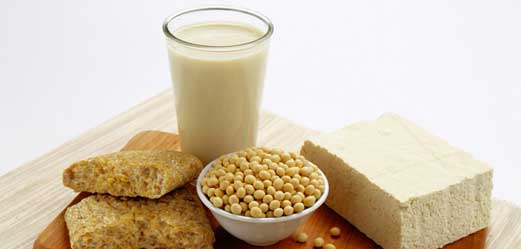Don't be concerned about Soy
Nutrition, March 23, 2017
Since stopping eating meat and drinking milk people love to warn me about the dangers of soy. Following is a great summary of the research. Thanks to Dr. Michelle McMacken for posting this on her Instagram account (you can follow her @veg_md)
BASICS: Soy contains isoflavones, a type of phytoestrogen that is 1000 times weaker than human estrogen & does not behave exactly like human estrogens in our bodies. Isoflavones block some of estrogen's effects & mimic others, generally resulting in health benefits; they also have antioxidant & anti-inflammatory properties. Soy has the highest protein & fat content of any legume & is high in iron & fiber.
.
WOMEN’S HEALTH: Soy has been shown to prevent breast cancer in the amounts consumed in Asia. A 2008 review showed that women averaging 1cup of soymilk/ 1/2cup of tofu per day had a 30% lower risk of developing breast cancer vs women who avoid soy. Soy has also been shown in many studies to reduce the risk of recurrence in breast cancer survivors. ?A recent study showed that breast cancer survivors who consumed the most soy had a 21% lower risk of dying of any cause over the 9-yr study, compared with low-soy consumers. Soy reduces the risk of endometrial cancer & can reduce menopausal hot flashes.
.
MEN'S HEALTH: A large 2010 systematic review showed that soy does not affect testosterone levels, sperm concentration, or sperm quality. Soy may lower the risk of prostate cancer by up to 50%.
.
THYROID: Soy does not affect the thyroid in people with normal thyroid function and iodine levels. Whether or not you eat soy, you should meet your daily iodine needs (150mcg/day). If you take thyroid hormone, you may need the dose adjusted if you change your soy intake.
.
CARDIOVASCULAR RISK: Soy lowers blood pressure & LDL cholesterol.
.
Many people worry about estrogen & GMOs/pesticides from soy, but most dietary estrogen comes from dairy & meat products. Unlike soy phytoestrogens, animal estrogens DO mimic human estrogen in our bodies. Similarly, most GMO soy is used to feed chicken, pigs, & cattle, which are then consumed by people. Much of the soy grown for human consumption is non-GMO.
References used by Dr. McMacken
Messina et al, Nutrients 2016
Wu et al, Br J Cancer 2008
Baglia et al, Int J Cancer 2016
Nechuta et al, Am J Clin Nutr 2012
Chi et al Asian Pac J Cancer Prev 2013
Yan et al, Am J Clin Nutr 2009
Zhang et al, Medicine 2015
Hamilton-Reeves et al, Fertil Steril 2010
Taku et al, Menopause 2012
Messina et al, Thyroid 2006
Jenkins et al J Nutr 2010
Liu et al Nutr Metab Cardiovasc Dis 2012
Zhang et al, Cancer 2017

.jpg?version=8)